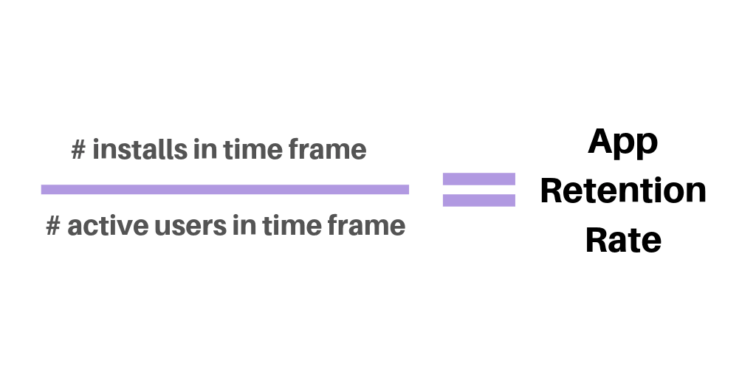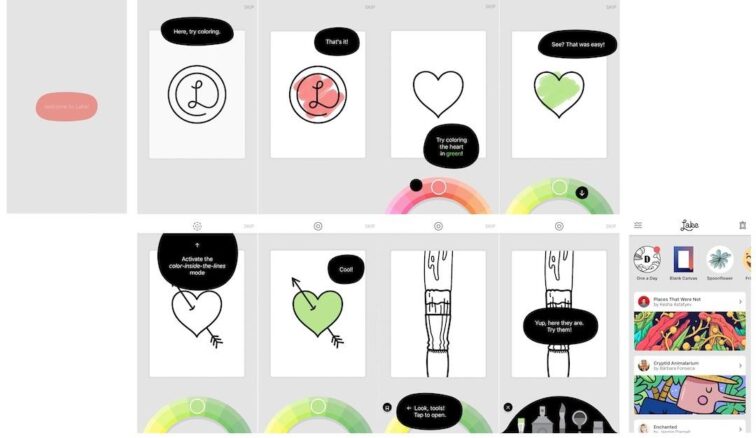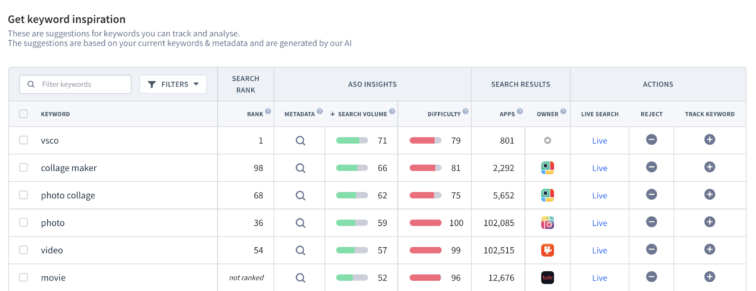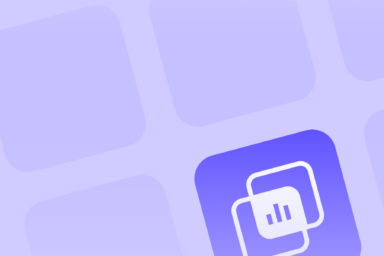How to increase app retention rates with user retention strategies that work!
Retention is one of the most important metrics to track in games and apps. It defines the size of your audience and lets you know if your project has any growth capacity while also informing you about the average time users spend using your app — all of which directly influence your revenue.

Data and analytics play crucial roles when you are deciding how to develop your games and apps further and how much money you’re making.
App Store and Google Play ranking algorithms consider download velocity and retention rate when ranking your app. Consequently, having a high retention rate suits your overall revenues and your app store visibility.
This article will show how to increase your app retention rate and keep users returning repeatedly. Let’s start.
What is retention?
For your mobile app or game to become profitable, you need users to bring your revenue. To have paying users, you need an audience that doesn’t mind opening their wallets. Therefore, you need new users who love the project and play your game or use your app for a long time.
Retention defines the percentage of users that stay with your app users. It’s calculated for your user base on a particular day from the moment of the installation. It shows the percentage of users who launched an app on the Nth day after installing it. Here’s the formula:
Day N Retention = Number of users that launched an app on Day N / Number of users who installed an app N days ago x 100%
On the other hand, app churn shows the percentage of users who uninstalled or stopped using your app after some time.
Usually, the most significant churn happens during the first few days after installing an app. After that, retention decreases more slowly. So, if your players launch the game at the end of the first usage month, they will stay with you for a longer time.
Here’s what a typical retention graph looks like:

What is app retention rate?
Understanding app retention allows us to define app retention rates quickly.
Retention rate is how many people still use your app after a certain period. A high app retention rate shows you that people enjoy using your app and benefit in some way from its features.
Identifying causes of low app retention rate
A low retention rate is never good. When you notice it is dropping, you must figure out why people are uninstalling or abandoning quickly. You can do this by tracking user behavior and pinpointing the exact in-app moments that prompted an uninstall or abandonment.
You’ve identified a high-priority fix when a pattern appears. This could be, for example, people uninstalling right after a crash or abandoning when they hit a login prompt.
Calculating app retention rate
App retention rate should be measured weekly, monthly and quarterly to identify short-term and long-term retention issues.
It’s calculated by dividing the number of installs in a given period by the number of active users in the same period.

Churn rate: The inverse of app retention rate
The inverse of retention rate is your churn rate, the percentage of users who stop using your app within a specific time.
Why do you need to track and increase your retention rates?
As we mentioned before, retention is one of the most critical metrics. But what’s so special about it?
- Retention influences the size of your audience. Your churn rate has to be smaller than the number of new users.
- If there are new users who don’t continue using your app, it won’t have a consistent audience. In this case, you most likely have only new users that don’t stick around.
- Monetizing your project will be challenging, with low retention rates.
- Retention influences your revenue. It means that the longer users stay with you, the more loyal they become and the more likely they will pay for premium elements. If your app has some built-in microtransactions, the longer your users stay, the more payments they’ll make.
Also, you need to compare retention across different demographics. This way, you’ll be able to evaluate changes that you’ve made in your app and how they influenced your users.
Retention helps you calculate Lifetime and Lifetime Value. (LTV = ∑ retention x ARPDAU). These are vital metrics for any project. They define the app’s success, allow you to determine the most effective sources of user acquisition and find the most attractive user segments or demographics.
Strategies for increasing app retention rate
According to Localytics, 71% of app users churn within 90 days. Adjusting factors such as app onboarding, in-app and push notifications, intro tutorials, email marketing, and social media marketing can keep the churn rate low and retention rate high.
Improving app onboarding for higher retention
The onboarding process is fundamental. This is the first step that every user will take in your app. Onboardings will differ from app to app depending on what information you need from the user and what information you need to tell them.
We’ll go over 2 of the most common onboarding styles:
- Engaging Tutorial
- Create an Account and Login
Engaging tutorial style onboarding
Take these screens to teach the user more about your app. Lake, a coloring app, does a great job with this. They don’t ask users to create an account, which is already reducing some friction here. Instead, Lake guides its new members through a tutorial-style onboarding flow. The tutorial teaches users how to use Lake’s available functions and features.
Notice how the entire tutorial engages the user. They must act like they are being taught to move onto the next screen. This type of onboarding gets users to enter their apps smoothly while teaching them the essential functions.

An onboarding flow, as Lake uses, increases retention because users know what to do once they’re in the app. They won’t be confused about the next steps and can immediately jump into using the app.
Seamless create account and login
The second most used onboarding flow is to create an account or login for returning users. You want this process to be as smooth as possible for the user. Many people drop off during this step because they don’t want to deal with the hassle of creating an account. However, there are various integrations now that you can use to make it easier for your users.
Evernote is a web and mobile app that enables people to organize their tasks and to-do lists. They require users to create an account, but the process takes just 5 seconds.

All users need to do is enter their email and password, and off they go.
Additionally, Evernote allows users to create an account or sign in with Google. Giving your users the option to create an account with any social sign-in (Facebook, Instagram, LinkedIn, Google, etc.) turns the multi-step process into 1 click.
By allowing users to enter your app and experience its benefits as fast as possible, you’ll decrease the number of people abandoning it during the create an account page.
Get users to engage more with push notifications
Push notifications are another great way to increase user engagement and retention. But we all know that constant notifications can become annoying. Every app and every audience is different when it comes to this threshold. How often can you send your users messages before they become frustrated?
Frequency of push notifications
If you have a social media app like Instagram or TikTok, users rely on notifications to let them know that their posts received some engagement from their audience. Then you can go a bit crazy with the push notifications because knowing a post got a like or a comment is a primary benefit of the app. Just make sure that users have the option of turning them off.
Don’t forget – send push notifications when it’s appropriate. Don’t spam your users.
For utility apps like alarm clocks or grocery lists, notifications should only be used when the user sets them. Again, the app aims to help the user complete the task. Notifications sent at random will confuse users and cause frustration, which could lead to an uninstall or abandonment.
Always ask yourself if the notifications provide value to your users. When the answer is no, skip it. Useless reports will teach people to ignore your messages, and they’ll ultimately uninstall your app. Valuable messages get people to appreciate the benefits your app provides. They may even look forward to receiving the notification.
You’re starting to get the gist of it. Now, let’s talk about the actual content of the notifications.
Staying on brand with push notifications
The tone of voice you use throughout the app store listing, and website is the brand voice. You have to keep this consistent in the notifications too. Does your brand often use emojis and casual language? Then go ahead and implement this in the messages. Users will start to notice the sound of your brand.
The notifications should also be informative, creating a need for the user to open your app. Rather than releasing all the information, give a teaser of what awaits them. That way, they’ll want to open your app and re-engage.
In addition, you can make the notifications more personal. Use the person’s name or send them targeted messages. People will be more interested when they know the message was intended for them.
Using app store optimization to attract the right users
The last point we’ll discuss is how to attract the right users. Targeting the right people is vital to app growth. That’s because when people unintentionally download your app, or they do so thinking your app does something different, they’ll quickly uninstall it. Then your app retention rate drops, harming your overall app store ranking.
The solution is to tailor your app store listing to your target audience – that way, people who need your app can always find it.
Optimizing keywords for higher app retention rates
We’ve been here many times. App keywords are how people find your app. I can’t stress the importance of understanding your target audience’s search behavior enough. You have to speak their language and use the words they use.

The keywords you choose to implement should reflect the terms people use to search for apps like yours. When this is aligned, you’ll attract the right users who will likely become loyal users.
Other tactics to further improve your app retention rate
There are several other options that you can do to improve your retention:
- Work on your first session and FTUE. They define the future behaviour of users. This is your moment to ensure that users understand your game. A well-developed tutorial will help better your FTUE and show all your best features.
- Keep your game and app on your users’ radar screens. Use push notifications, app email notifications, etc.
- Think about bonuses and gifts. They will increase instances of your users launching your app again and again.
- Unlock new content and features steadily. This way, you’ll keep users motivated and better engaged. For example, set daily tasks and goals and add daily updated content.
- Add targets and stages. If you cut marks into smaller parts, you’ll give users the feeling of progress and keep them happy and satisfied when they accomplish goals.
- Add social interaction. Connect your game to social networks and allow interactions with friends, adding more attachment and commitment.
When should you measure retention?
Usually, retention isn’t measured daily. The most common days are Day 1, Day 7, and Day 28. Traditionally, reasonable retention rates are:
- Day 1 Retention – 40%
- Day 7 Retention – 20%
- Day 28 Retention – 10%
Day 1 Retention informs you about users’ first impression of an app — how they like the interface, how convenient it is and if it corresponds to their needs and expectations. Moreover, Day 1 Retention influences the following days’ retention. That’s why this indicator is so crucial. You need to make sure that your user’s first impression is unforgettable. They need to know the product and its value and advantages. This is called onboarding.
From now on, your users will be immersed in the project, and their path should look like this: Installing an app » Onboarding » Coming back », Making payments
You need to hook users during the first session to get money out of them. Analyzing and adapting the FTUE (First Time User Experience) is a great place to start.
Day 7 Retention tells you how much your users like your game or app as they get to know it better after a week.
Day 28 Retention shows the percentage of users who got used to your app and have been using it with some frequency. They will become loyal users and stay with you for a long time. Moreover, if users are playing your game longer, there’s a higher probability that they’ll pay.
Ideally, an app should become a part of a user’s life. At the same time, retention depends on the genre. For example, you check your accounts on social networks several times a day, but without a doubt, you order a taxi and book hotels much.
When should you track retention on an hourly basis?
Another approach to tracking and calculating retention is to follow it hourly instead of daily. Day 1 Retention will be a percentage of users who returned within 24-48 hours of installation.
Let’s see how it influences the result. The red dots are user sessions on the scale below. If we calculate retention by calendar days, your users are considered back on the 1st, 2nd, and 4th days from the install date. But if we track it hourly, the first two sessions will happen on the same day. In this case, the user will be considered back on the 1st and 3rd days from the installation.

This calculation makes sense if your users are spread within different time zones and their calendar day doesn’t start simultaneously. In this case, for example, traffic growth in one country may change the retention of the first few days and lead to false conclusions. As an additional bonus, such a method helps calculate another metric: Day 0 Retention. It shows if users launch an app on the same day of the installation.
How does user segmentation influence retention?
The behaviour of users from different sources, countries, platforms, etc., will vary. Segmentation allows you to sort these differences out. Then you’ll be able to evaluate the most effective traffic sources.
Due to different demographics, your users have different expectations, which influence your app’s retention. You can use this data to change your ad target audience or your app’s positioning.
Optimizing app store visuals for higher app retention rates
Don’t forget about your app icon, screenshots, and preview video. Visuals matter a lot. It’s good practice to A/B test your app store visuals before deciding which ones to publish. If you don’t have the resources for an actual A/B test, you can form a focus group or ask friends and family who fit your target audience.
Leave the Hard Work to Us
The App Radar team will manage your apps and grow them through organic and paid user acquisition methods. We work with you to build a strategy that suits not only your needs but also your budget.
Latest Posts

iOS App Product Page Localization: How to Use it the Right Way to Improve ASO
Top 10 Most Downloaded Games in Google Play Store (July 2025 Update)
Google Play Store Listing Experiments: How to Run Native A/B testing for Android Apps for Free!
12 Best Mobile Measurement Partners (MMPs) to Consider for Your Mobile App Attribution in 2025
Academy Lessons
Continue lessons

